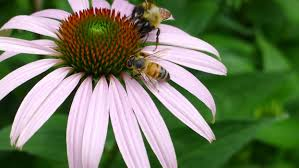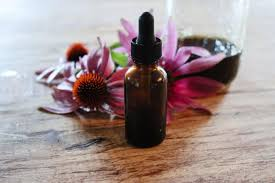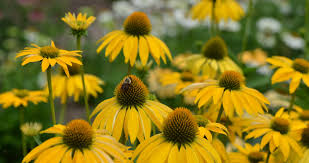Echinacea purpurea, commonly known as purple coneflower, is a versatile plant cherished for both its visual appeal and its ecological benefits. Native to the Midwest, this winter-hardy perennial offers more than just a splash of color. With a long history as a medicinal herb, purple coneflower has proven itself invaluable in gardens designed to attract pollinators and other beneficial wildlife.
Ecological Benefits for the Garden
Echinacea is a magnet for a wide variety of pollinators, including bees, butterflies, and moths. A study conducted by the University of Saskatchewan in 2006 found that the nectar of echinacea contains a mixture of sugars—glucose, fructose, and sucrose—that appeals to generalist pollinators. The protein-rich seeds, which ripen in late summer and fall, also serve as an important food source for finches and other seed-eating birds.
This hardy perennial thrives in sunny, well-drained locations, making it suitable for a wide range of climates. For optimal seed production, plant at least three echinacea plants together, as this ensures both a stunning floral display and ample seeds. Plus, if you enjoy cut flowers, the blooms of echinacea make excellent additions to your vase. Harvest them just as the petals begin to droop, and they can last up to a week.

Growing Echinacea in Your Garden
Echinacea can be grown from seed or purchased as plants. If starting from seed, it’s best to start them indoors in late winter for the best results. Some newer varieties, such as the award-winning ‘Cheyenne Spirit,’ may be more expensive due to their vibrant colors in shades of yellow and orange. For top germination rates, sow the seeds in damp seed-starting mix, maintaining a temperature of 65–70°F (18–21°C) for 10–15 days. To bloom in the first year, seeds must be started by January 25.
While some newer varieties may be sterile and lack medicinal properties, traditional purple coneflower plants produce multiple crowns as they mature. These can be propagated by digging and dividing the plants in either spring or fall. If you’re interested in harvesting echinacea for medicinal uses, consider dividing your older plants in early fall to gather the roots.
Creating Echinacea Tincture
If you have a sufficient number of mature plants, you can make your own echinacea tincture. To start, harvest two to three well-rooted plants, set aside a few leaves to dry, and clean the roots. Chop one-half cup of roots and leaves finely, place them in a jar, and cover with 100-proof vodka. After shaking well, store the jar in a dark cabinet, shaking it daily. After three weeks, strain the tincture through a coffee filter and store it in a cool, dark bottle.
At my house, we use this tincture at the first sign of a cold or virus, taking it in warm tea or directly by the teaspoon. While scientific studies, such as one from the University of Wisconsin, have shown limited effectiveness when echinacea is taken in pill form, I still find value in its use. Tinctures allow the body to absorb the herb’s compounds more effectively, as they begin to be absorbed in the mouth rather than battling stomach acids. Additionally, the placebo effect—where belief in a remedy’s power enhances its effectiveness—can also play a significant role in its benefits.

Why Echinacea Is Worth Growing
Even if you don’t rely on echinacea for its medicinal properties, it still holds tremendous value in the garden. Its ability to attract beneficial pollinators like bees and butterflies makes it a favorite in any pollinator-friendly garden. Plus, echinacea’s sturdy, upright nature ensures it stays where you plant it, making it a well-behaved and reliable addition to the front row of your garden.
Ultimately, echinacea is a plant that enriches both the gardener and the garden. Whether you’re drawn to its medicinal uses, its ecological contributions, or simply its aesthetic beauty, this hardy perennial is a beneficial and rewarding addition to any garden.
